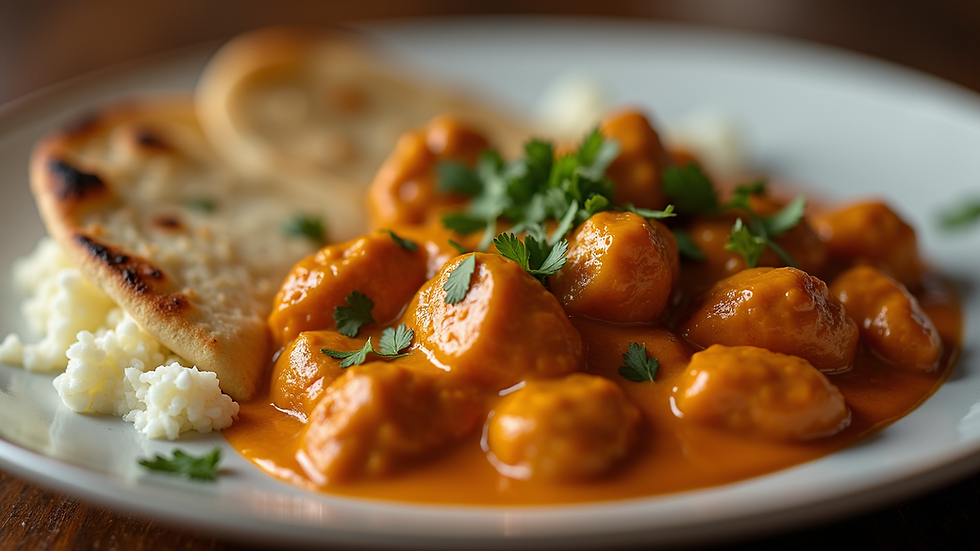A Culinary Journey Through Indian Dishes
- Now Tec

- Aug 27
- 4 min read
Indian cuisine is a vibrant tapestry of flavours, colours, and aromas that reflect the country’s rich cultural heritage. From the spicy curries of the south to the tandoori delights of the north, Indian dishes offer a diverse and exciting culinary experience. This blog post takes you on a journey through some of the most iconic Indian dishes, exploring their origins, ingredients, and how you can enjoy them at home or in a restaurant.
Exploring the Diversity of Indian Dishes
India’s vast geography and cultural diversity have given rise to a wide variety of regional dishes. Each region has its own unique cooking style, ingredients, and traditional recipes. For example, the coastal areas are known for their seafood curries, while the northern plains are famous for rich, creamy dishes and bread like naan and roti.
Some popular Indian dishes include:
Butter Chicken: Originating from Delhi, this dish features tender chicken cooked in a creamy tomato-based sauce with butter and spices.
Masala Dosa: A South Indian speciality, this is a crispy rice and lentil crepe filled with spiced mashed potatoes.
Biryani: A fragrant rice dish layered with marinated meat or vegetables, cooked with saffron and aromatic spices.
Chole Bhature: A North Indian favourite, consisting of spicy chickpea curry served with deep-fried bread.
These dishes showcase the balance of spices and textures that make Indian cuisine so beloved worldwide.

Ingredients That Define Indian Dishes
The magic of Indian cooking lies in its use of spices and fresh ingredients. Common spices include cumin, coriander, turmeric, cardamom, and garam masala - a blend of ground spices that adds warmth and depth to many dishes. Fresh herbs like cilantro and mint are often used to garnish and enhance flavours.
Vegetables such as potatoes, eggplants, and okra are staples, while lentils and chickpeas provide protein in vegetarian dishes. Dairy products like yogurt and ghee (clarified butter) are also essential, adding richness and tang.
To recreate authentic Indian dishes at home, it’s important to source quality spices and ingredients. Many local markets and specialty stores offer fresh spices and ready-made masala blends. For those in the UK, visiting a place like masala boss wimborne minster can provide access to authentic ingredients and ready-to-eat meals.

Cooking Techniques and Tips for Indian Dishes
Indian cooking involves a variety of techniques that bring out the best in the ingredients. Here are some key methods:
Tempering (Tadka): This involves frying spices in hot oil or ghee to release their flavours before adding them to the dish.
Slow Cooking: Many curries and biryanis benefit from slow simmering, which allows the spices to meld and the meat to become tender.
Tandoori Cooking: Using a clay oven called a tandoor, meats and breads are cooked at high temperatures, giving them a distinctive smoky flavour.
Roasting and Grinding Spices: Freshly roasted and ground spices have a more intense aroma and taste compared to pre-ground ones.
For beginners, starting with simple recipes like dal (lentil soup) or vegetable curry can build confidence. Using pre-made spice mixes can also simplify the process without compromising flavour.

Popular Indian Dishes to Try at Home
If you want to explore Indian cooking, here are some dishes that are both delicious and manageable for home cooks:
Dal Tadka: A comforting lentil dish tempered with garlic, cumin, and mustard seeds.
Chicken Tikka Masala: Marinated chicken pieces cooked in a creamy tomato sauce.
Aloo Gobi: A dry curry made with potatoes and cauliflower, spiced with turmeric and cumin.
Paneer Butter Masala: Cubes of Indian cottage cheese in a rich, buttery tomato gravy.
Pair these dishes with basmati rice or Indian breads like chapati or paratha for a complete meal. Don’t forget to add a side of cooling raita (yogurt with cucumber and spices) to balance the heat.
The Cultural Significance of Indian Dishes
Indian food is more than just nourishment - it is a celebration of culture, tradition, and community. Meals are often shared with family and friends, and many dishes have stories or religious significance behind them.
Festivals like Diwali and Holi feature special sweets and savoury dishes that bring people together. Street food culture is also vibrant, with snacks like samosas, pakoras, and chaat enjoyed by millions daily.
Exploring Indian cuisine is a way to connect with the country’s history and people. Whether dining out or cooking at home, each dish offers a glimpse into India’s rich culinary heritage.
Embarking on a culinary journey through Indian dishes opens up a world of flavours and traditions. Whether you are a seasoned foodie or a curious beginner, the diversity and depth of Indian cuisine promise an unforgettable experience. For those looking to enjoy authentic meals or ingredients, visiting masala boss wimborne minster is a great way to start.
Enjoy the adventure of cooking and tasting Indian dishes - your palate will thank you!





Comments